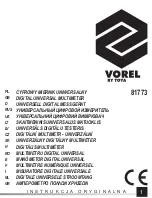
Each QOS profile contains a Traffic Class (TC) entry.
–
The traffic class determines the relative priority of a frame based on the traffic
class to queue assignment function and the scheulder settings
–
The traffic class determines the outgoing p-bits for the egress direction
•
Egress queue scheduling with strict Priority and/or Weighted Bandwidth options.
Sl-14/8 option card
Interfaces
On the faceplate, the Sl-14/8 card provides:
•
Eight cages for Small Form-factor Pluggable (SFP) optical transceivers
•
SFP-1 and SFP-5 support for STM-1 or STM-4 interfaces
•
SFP-2 to SFP-4 and SFP-6 to SFP-8 support for STM-1 interfaces.
The board supports 1.2 Gigabit interfaces and provides a total transmission capacity of
eight VC-4s. This capacity is divided into two VC-4 groups namely, the SFP-1 to
SFP-4 group and the SFP-5 to SFP-8 group. Each group provides a four VC-4
transmission capacity. For example, if the SFP-1 is equipped with an STM-4 interface,
the SFP-2 to SFP-4 have no more capacity and cannot be used. Similarly, if the SFP-5
is equipped with an STM-4 interface, the SFP-6 to SFP-8 is being utilized and
therefore cannot be used for any additional capacity.
Each SFP transceiver has an LED which indicates three states. When the LED is on, it
indicates hardware failures and confugration alarm. When the LED is blinking, it
indicates transmission failure. When there are no failures, the LED is off. A fault on
the SFP is indicated by an LED on the SFP itself and not on the host unit’s LED.
The STM-1 and STM-4 in-loop and out-loop loopbacks are achieved by the
cross-connect functionality.
The following figure shows the front panel of the Sl-14/8 option card.
Product description
Introduction
....................................................................................................................................................................................................................................
2-26
Lucent Technologies - Proprietary
See notice on first page
365-312-847R4.0
Issue 4, November 2006
















































